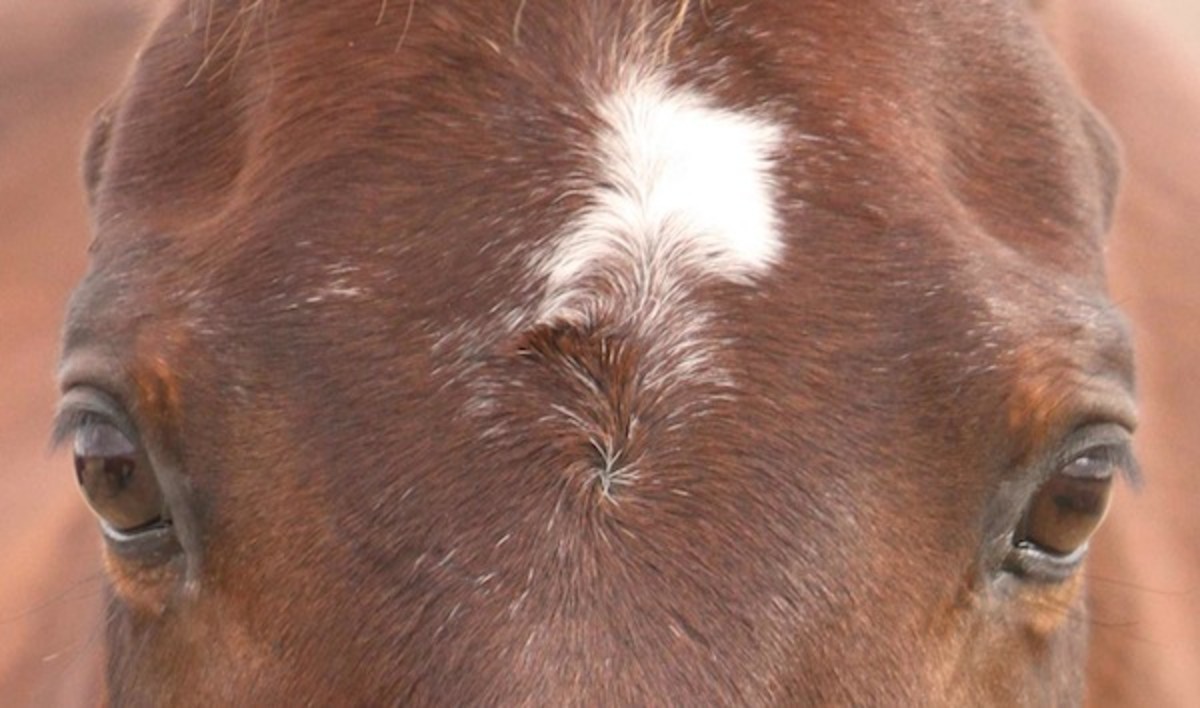
Whorls, the hair swirls or cowlicks on your horse’s face, are fascinating for what they may tell you about his temperament.
Reined cow horse superstars Lyn Anderson and Sandy Collier talk about whorls in their new DVD set, Personality Project: Understanding Horses. They note that although beliefs about these cowlicks vary, certain theories about them persist. For example, a single whorl centered directly between a horse’s eyes seems to be linked to what we think of as an uncomplicated, tractable temperament.
And, if a horse has two whorls close together, it may indicate a horse that’s slightly more fractious, though still perfectly trainable. If the two whorls are farther apart and/or higher on the forehead, however, and especially if there are several other cowlicks on the horse’s face and body, this may indicate a more reactive, unpredictable temperament.
Lyn’s and Sandy’s thoughts are consistent with those of experts I researched when I wrote a cover story on this topic for the June 2008 issue of H&R. All quite fascinating.
Why a link between whorls and temperament? Scientists like Temple Grandin speculate it’s because the nervous system (which affects temperament) and the skin (which contains the whorl patterns) are formed at the same time and in the same embryonic layer during a foal’s development in the womb.
Like other experts, Lyn and Sandy stress that you shouldn’t make buying decisions based on whorls alone. Rather, if a particular whorl pattern backs up a suspicion you already have about a prospect, then you may want to evaluate that horse even more closely before proceeding.
And, as I noted in a previous blog post, Temple Grandin and clinician Linda Tellington-Jones stress that whorls are best used not as a way to rank horses but as a guide in training. In particular, high-whorl, more-reactive horses need extra care and patience if you want to avoid traumatizing them.
In their DVD, Lyn and Sandy stress there’s no “cookie-cutter training” when it comes to horses, and that a horse’s personality does have an impact. They say you must evaluate a horse’s temperament and attitude, then bring him along in the manner that best suits him–in the discipline where he’s happiest.

And if whorls can help you to achieve these goals and understand your horse better, that’s a good thing.




